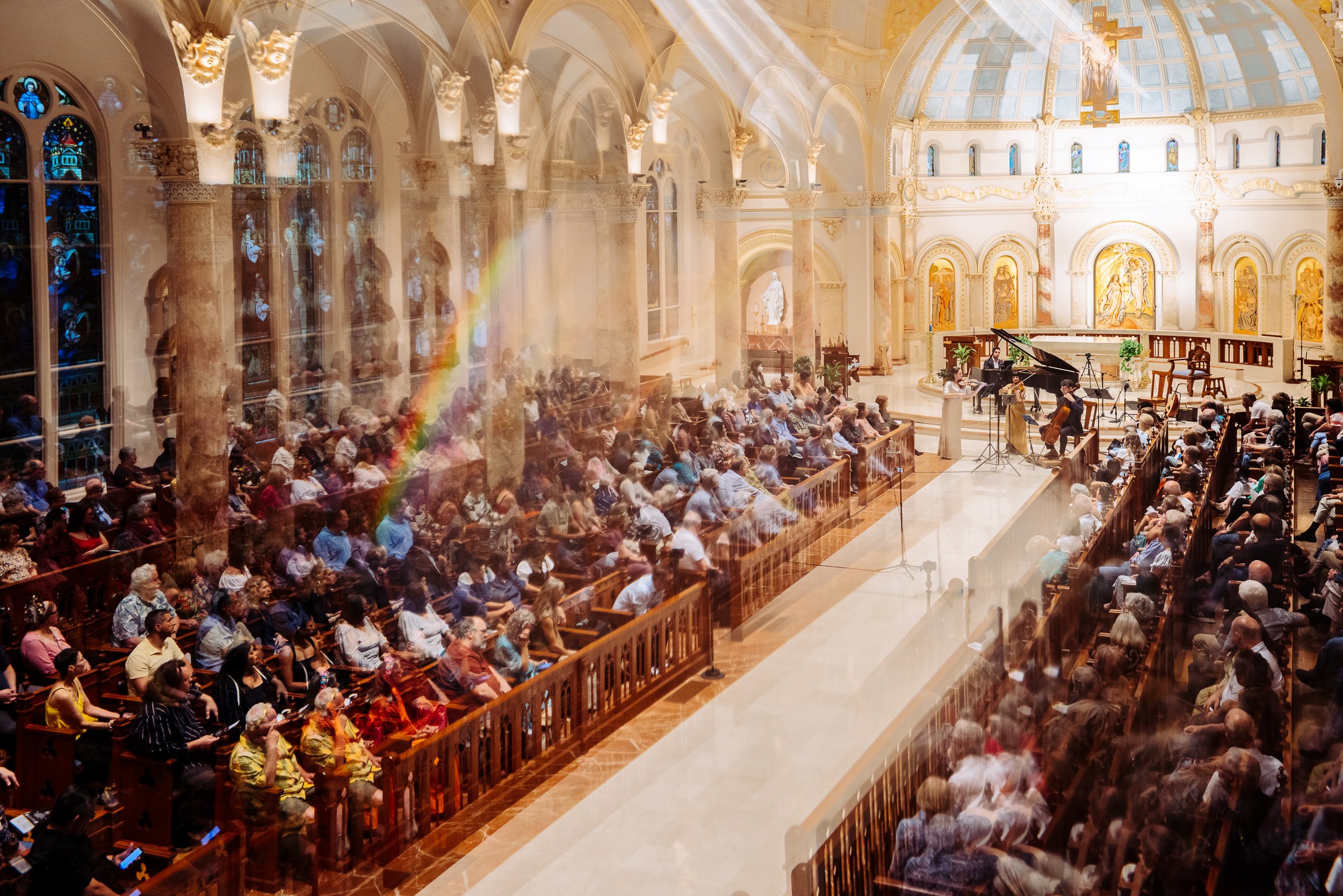SHIMMERS OF BYZANTIUM
Photo by Agarita and Chris Stokes
Duration: 24 minutes
Instrumentation: soprano, mezzo soprano, oud, violin, viola, cello, piano, and organ
Program note:
The iconic and declarative first phrase of William Butler Yeats’s poem Sailing to Byzantium—“That is no country for old men”— spawned a novel by Cormac McCarthy and later an award-winning film by Joel and Ethan Cohen. The poem imagines its protagonist as one of advanced age, having become an anachronism in their own time, measuring the imminent demise of mortality against the enduring yearning for immortality. The narrator notes from the distance of years young lovers in each others arms, skies filled with bird song, oceans filled with fish—a world teeming with living abundance. Before this backdrop the narrator notes the specter of their own approaching death, observing in contrast to the youth that surrounds them that they are “but a paltry thing, a tattered coat upon a stick.” In the crux of this contradiction the narrator’s mind turns to the magnificence of ancient Byzantium and the majestic Hagia Sophia with its gold mosaics, Grecian goldsmiths, chanting “singing masters” of the soul, clergy, emperors, lords and ladies—all who within the imagination live in an ageless “artifice of eternity.” To Yeats and his sympathetic readers, this Byzantium is a chimeric figment of the mind’s eye, the ghost of a fictional past, but one for whom the yearning is as tangible as flesh and blood. Yeats’s narrator longs in their old age to be there, to join them in ageless, immortal form.
Shimmers of Byzantium meditates on this moment of reflection: what it means to feel anachronistic in one’s own time, to see one’s wrinkles, and yet to feel the vitality of youth within: the inherent contradiction between the aging of the body against the agelessness of the soul. In addition to setting the text of the Yeats poem, the work intersperses two short texts by the Ottoman Turkish poet Yahya Kemal Beyatlı. The latter was a poet, writer, and statesmen who lived to see the demise of the Ottoman Empire, many of its territories, and its transformation into the Turkish state. Like many writers of his generation, there is a feeling of nostalgic “hüzün” (a Turkish word designating grief or melancholy) at the loss of empire. Beyatlı’s words helps to locate this work in its spiritual home of Byzantium/Constantinople/Istanbul.
The work begins with a brief improvised cadenza known in Turkish music as a “taksim.” The ensemble then embarks on a peshrev—a musical form/genre that comes at the beginning of the multi-movement “fasil” in Ottoman classical music (or the start of a Sufi ceremony). Here, the ud (Turkish lute) joins the ensemble, drawing some of its material from modal scales (Turkish makam). What ensues throughout the remainder of the work is a conversation of sorts between the ensemble on the floor and the organ in the loft; the mezzo soprano on the floor, and the soprano in the loft. Consider the parallel to Yeats’s dialog between the mortal and immortal, and what transpires sonically may illuminate.
Concert premiere: May 3, 2025 at Motherhouse Chapel, University of the Incarnate Word, San Antonio, TX, by Megan Pachecano (soprano), Tynan Davis (mezzo soprano), Ethan Wickman, (oud), Andrew Lloyd (organ) and Agarita Chamber Players
Commissioned by the Barlow Endowment for Music Composition at Brigham Young University
Photo by Agarita and Chris Stokes
Photo by Agarita and Chris Stokes




